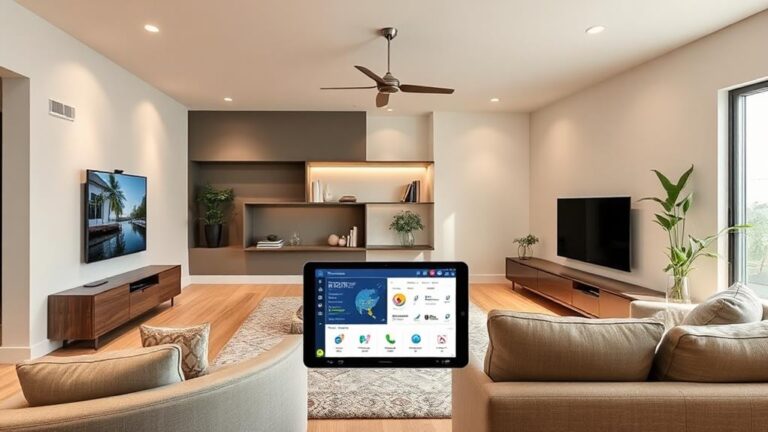To choose the right home security system, first assess your home’s needs by considering entry points, property size, and neighborhood safety. Set a budget that includes upfront costs and potential ongoing fees.
Decide between wired and wireless systems, understanding that wired options are stable but complex, while wireless systems are easier to install. Investigate key features like motion sensors and security cameras, and choose between professional or self-monitoring options.
Confirm compatibility with smart devices for seamless integration. Research brand reputation through customer reviews and verify the availability of customer support. With these insights, you’re prepared to make an informed decision.
Main Points
- Assess your home’s layout and entry points to determine necessary security coverage.
- Set a budget considering equipment, installation, and ongoing monitoring costs.
- Choose between wired, wireless, monitored, or unmonitored systems based on your home’s needs.
- Ensure compatibility with existing smart devices for seamless integration and control.
- Research brand reputation and read customer reviews for reliable product performance insights.
Assess Your Home’s Needs
Before researching home security systems, start by evaluating your specific needs. Examine your home’s layout. Consider entry points like doors and windows—these are significant for determining where sensors and cameras should be placed.
Consider the size of your property; larger homes may require more extensive coverage. It’s important to assess the neighborhood’s safety by checking local crime rates, which can influence the level of security you need.
Also, consider advanced detection features such as AI-powered systems that minimize false alerts, especially if you have pets or children. Determine if you need features like motion detectors or glass break sensors. Don’t forget to think about your lifestyle habits, such as if you travel frequently.
Understanding these elements will help you select a system that will protect your home.
Set a Budget
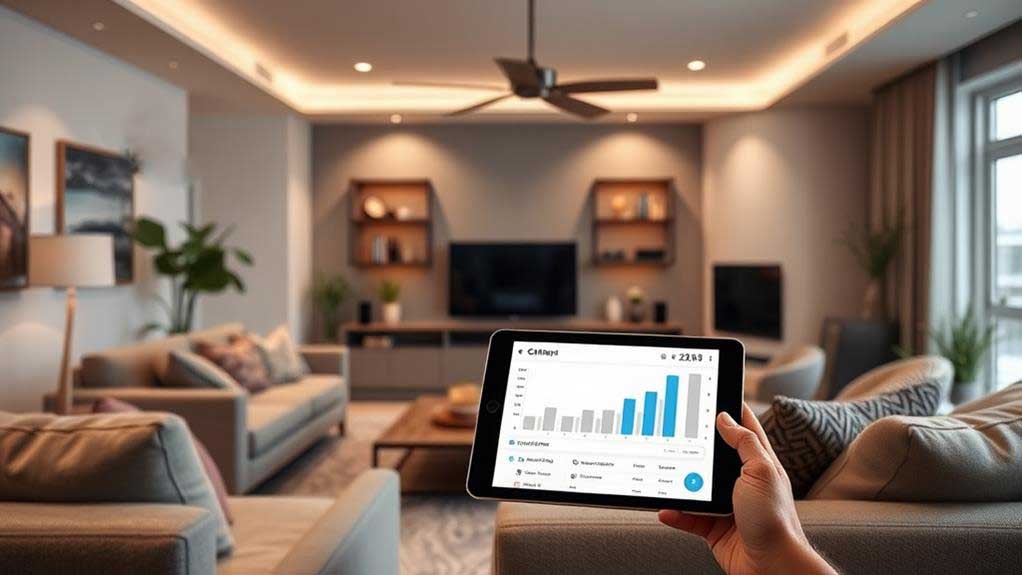
Once you’ve assessed your home’s security needs, it’s time to focus on your budget. Setting a budget is essential because it guides your choices and guarantees you don’t overspend.
Start by determining how much to pay upfront for equipment and installation, and consider exploring smart home security options that fit within your financial plan. Consider the ongoing costs too, like monthly monitoring fees, which can add up over time.
Evaluate your financial situation and set a realistic limit that aligns with your security priorities. Keep in mind, that while initial expenses might be higher for advanced systems, the long-term savings in potential theft prevention could offset these costs.
Be mindful of any additional fees, such as maintenance or upgrade costs, which can impact your overall spending. Establishing a clear budget helps streamline your decision-making process.
Consider System Types

When choosing a home security system, it’s important to understand the different types available. Systems can vary greatly, so knowing what’s out there helps you make an informed decision.
Incorporate modern technology such as video doorbell solutions to enhance your security setup. For example, video doorbell solutions allow you to see who is at your door and also integrate with security systems. There are several main types of systems to think about:
- Wired systems: These are connected by physical cables and are known for their reliability, though installation can be complex.
- Wireless systems: Easy to install, these systems use Wi-Fi or cellular signals, which can be more flexible but may face interference issues.
- Monitored systems: These involve a professional monitoring service that alerts authorities during an emergency.
- Unmonitored systems: Generally more affordable, these systems rely on alarms or notifications sent directly to you, requiring you to contact authorities.
Each type has benefits and limitations. Reflect on your needs and home setup when selecting the right system.
Evaluate Key Features
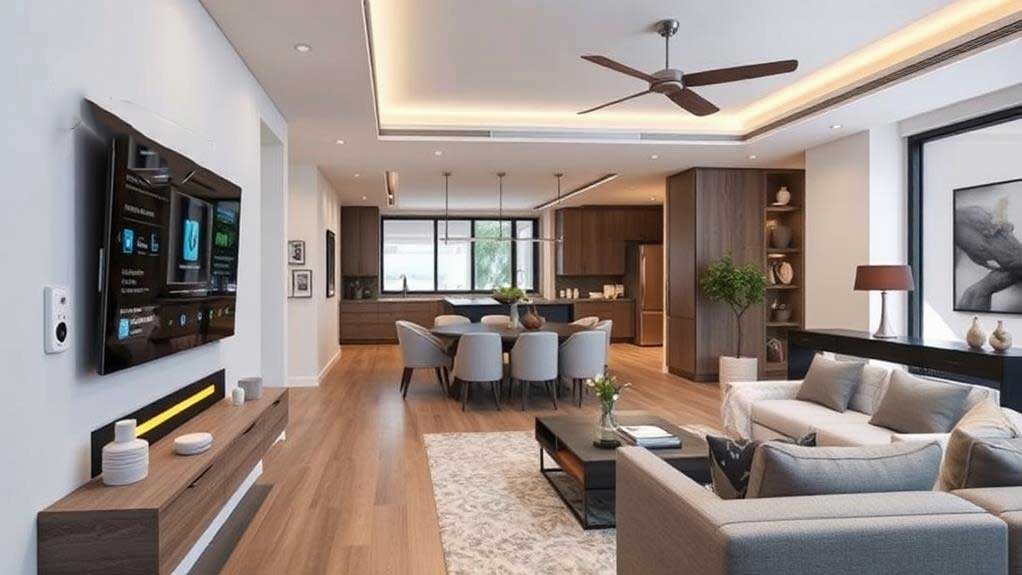
Evaluating key features of a home security system is essential in guaranteeing it meets your specific needs. Start by considering the system’s detection capabilities.
Look for motion sensors, door/window sensors, and glass break detectors. These components help identify an unauthorized entry. Check for a control panel, which serves as the system’s hub, allowing you to arm or disarm the system easily.
Consider including security cameras for real-time monitoring and recording. Evaluate the system’s connectivity options, such as Wi-Fi or cellular, to guarantee reliable communication.
Integration with security systems can enhance your overall home protection by allowing multiple devices to work together seamlessly. Some systems offer mobile app integration, allowing remote access and control from your smartphone.
Finally, verify if the system includes environmental sensors, like smoke or carbon monoxide detectors, to provide thorough protection.
Check Monitoring Options
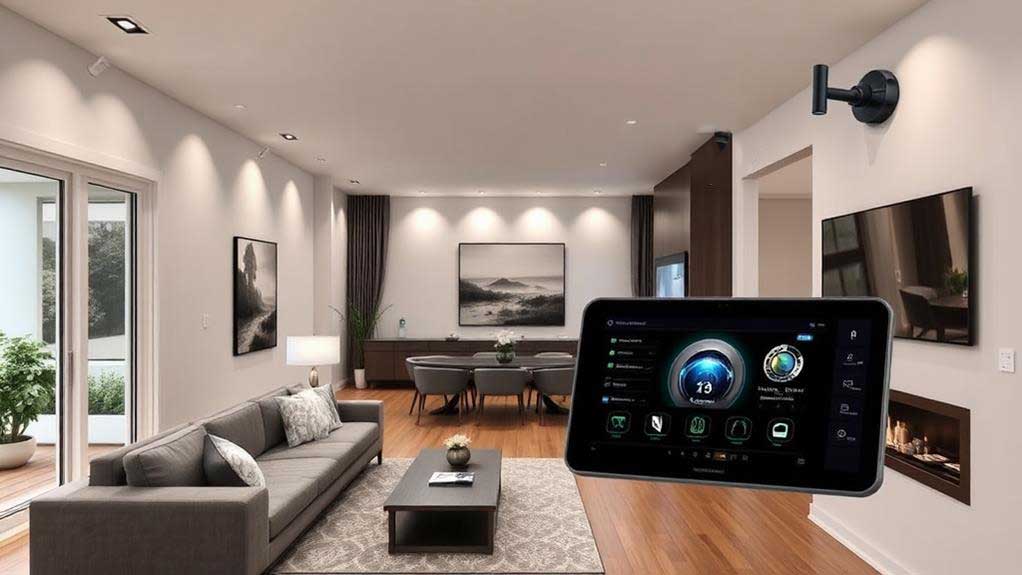
While evaluating the key features of a home security system, it’s important to account for how your system will be monitored. Monitoring options are essential for guaranteeing prompt response and peace of mind.
You’ll typically encounter two main types: professional and self-monitoring. Professional monitoring involves a dedicated team, alerting authorities in case of emergencies. Self-monitoring, on the other hand, relies on you to manage alerts and notifications.
You might want to explore security camera solutions that integrate seamlessly with your chosen monitoring method for enhanced protection. Here are some points to think about:
- 24/7 professional monitoring: Provides round-the-clock surveillance, but often incurs monthly fees.
- Self-monitoring with notifications: Cost-effective, though it requires you to be vigilant.
- Cellular backup: Guarantees system operability during power or internet outages.
- Contract length: Check if long-term commitments are required with professional services.
Choosing the right option depends on your preferences and lifestyle.
Compatibility With Smart Devices
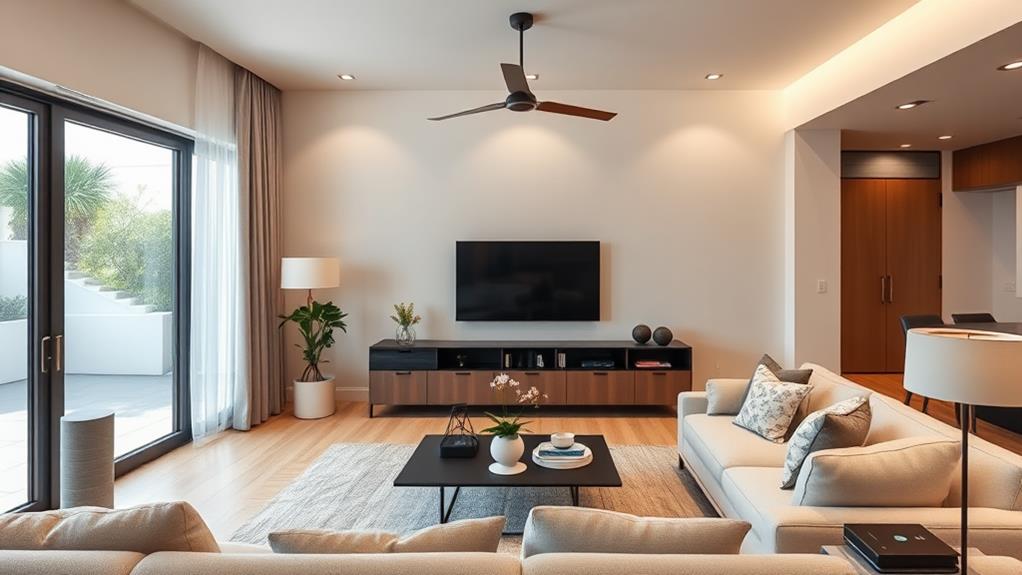
Transform your home security system into a smart fortress by ensuring it’s compatible with your existing smart devices. This compatibility allows seamless integration with smart speakers, thermostats, and lighting systems.
Look for systems that support popular platforms such as Amazon Alexa, Google Assistant, or Apple HomeKit. These integrations enable you to control your security system using voice commands or mobile apps, providing convenience and flexibility.
Ensure the system supports Wi-Fi and Bluetooth connectivity for easy communication between devices. Check for compatibility with smart locks, cameras, and sensors, that enhance your home’s security ecosystem.
You could also consider systems with IFTTT (If This Then That) support, which allows you to create automated routines that enhance security, such as turning on lights when motion is detected.
Installation Process
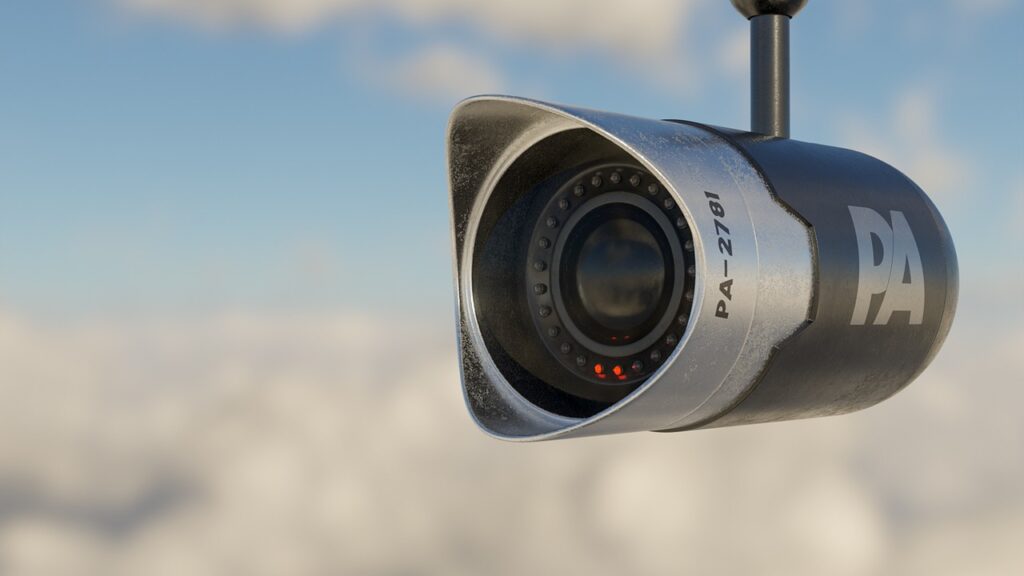
Installing a home security system can be straightforward if you follow the right steps. Begin by evaluating your home’s layout and deciding where to place cameras and sensors.
Consider entry points, such as doors and windows, for sensor placement. Have the necessary tools available, like a drill and screwdriver, for mounting the devices. Wireless systems often simplify the process, as they eliminate the need for extensive wiring.
Keep these steps in mind:
- Plan sensor placement: Identify vulnerable areas around your home.
- Gather tools: Have a drill, screwdriver, and ladder ready.
- Follow instructions: Use the manufacturer’s guide for precise installation.
- Test the system: Once installed, make sure all components function properly.
Following these guidelines will help you install your security system efficiently.
Research Brand Reputation
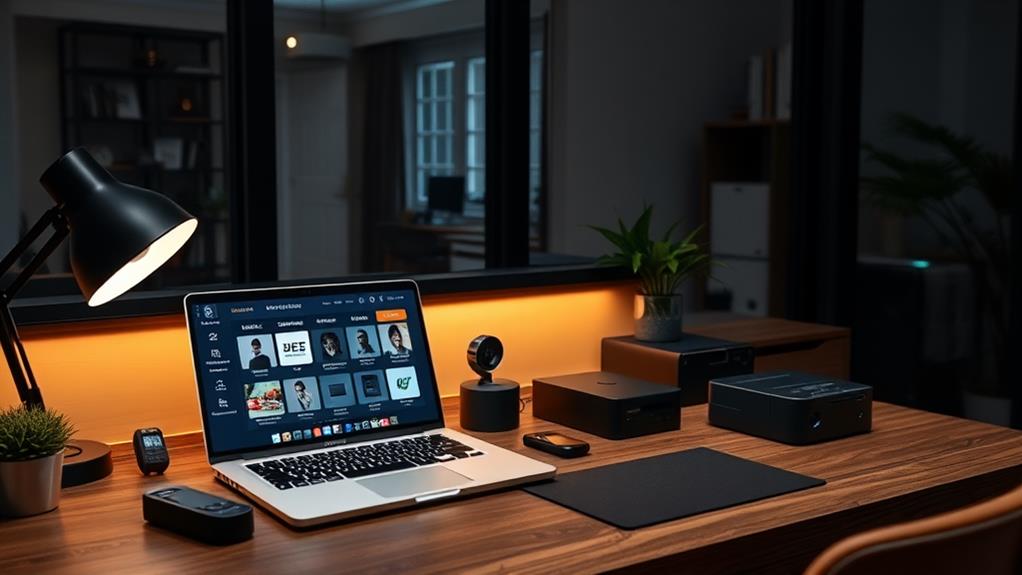
When selecting a home security system, researching brand reputation is essential to get reliable and effective protection. Start by identifying well-established brands known for their longevity in the market. Longevity often indicates consistent quality and customer trust.
Investigate whether the brand has received any industry awards or certifications, as these can be indicators of excellence and reliability. Look into any technological innovations the brand offers, like smart home integration or advanced monitoring features, as these may enhance your security setup.
Check if the company provides thorough customer support, including technical assistance and warranty services. A brand with a strong reputation is likely to stand behind its products, ensuring you receive the necessary support if issues arise.
Read Customer Reviews
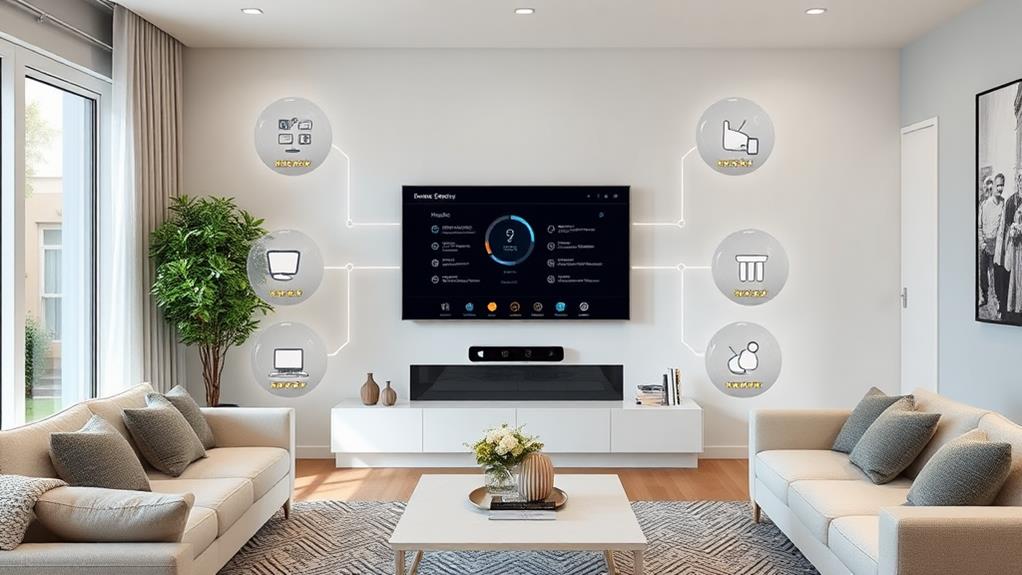
One essential step in choosing a home security system is to read customer reviews. These reviews give you insights into real user experiences, highlighting potential issues or advantages you might not find in promotional materials. Look for patterns in feedback, as consistent complaints or praises can provide valuable clues.
Pay attention to how the company responds to negative reviews, which reflects the quality of its customer service. Reviews can help you understand how easy the system is to install and use, and whether it meets expectations in real-world scenarios.
Consider the following when reading reviews:
- Overall satisfaction: Are most users happy with the product?
- Common issues: What problems do users frequently mention?
- Customer service: How does the company handle complaints?
- Feature effectiveness: Do the advertised features work well in practice?
Frequently Asked Questions
What Are the Legal Implications of Installing Home Security Cameras?
When installing home security cameras, it’s essential to understand legal implications. You should respect privacy laws, which vary by region. Generally, filming public spaces is acceptable, but recording private areas like neighbors’ homes without consent can lead to legal issues. Informing anyone entering your property about surveillance is often required. Additionally, misuse of recorded footage could violate privacy rights. Always check local regulations to confirm compliance with legal standards and avoid potential penalties.
How Do Home Security Systems Affect Home Insurance Premiums?
Installing a home security system can lower your home insurance premiums. Insurers often offer discounts because these systems reduce the risk of theft and damage. When you have alarms, surveillance cameras, or motion detectors, you’re not as likely to file a claim. However, it’s important to check with your insurance provider, as discounts vary. Some providers require specific systems or monitoring services to qualify for premium reductions, so verify your system meets their criteria.
What Measures Ensure the Privacy of Collected Security Data?
To guarantee the privacy of collected security data, you should focus on encryption, which scrambles data so unauthorized users can’t access it. Ascertain the system uses secure, often cloud-based storage with strong passwords. Two-factor authentication adds another layer of security, requiring a second form of verification. Familiarize yourself with the company’s privacy policies, confirming data isn’t shared without consent. Regular software updates are essential to protect against vulnerabilities and maintain privacy.
Are There Options for Temporary Security System Installations for Renters?
Yes, there are security systems designed for renters that offer temporary installations. These systems often include wireless components, allowing easy setup and removal without damaging walls. You can find options like battery-powered cameras and door/window sensors, which communicate via Wi-Fi. Look for systems with no long-term contracts, making them ideal for flexible, short-term use. Always verify the system offers mobile app control, giving you real-time alerts and remote access.
How Do Weather Conditions Impact Outdoor Security Camera Performance?
Weather conditions greatly impact outdoor security camera performance. Rain and snow can obstruct the camera lens, reducing image clarity. Fog and mist can cause similar issues, affecting visibility. Cold temperatures might lead to condensation inside the camera, potentially damaging electronic components. Strong winds can shake cameras, resulting in blurry images. To mitigate these effects, choose cameras with weatherproof casings and features like infrared night vision for consistent, reliable monitoring in various conditions.



